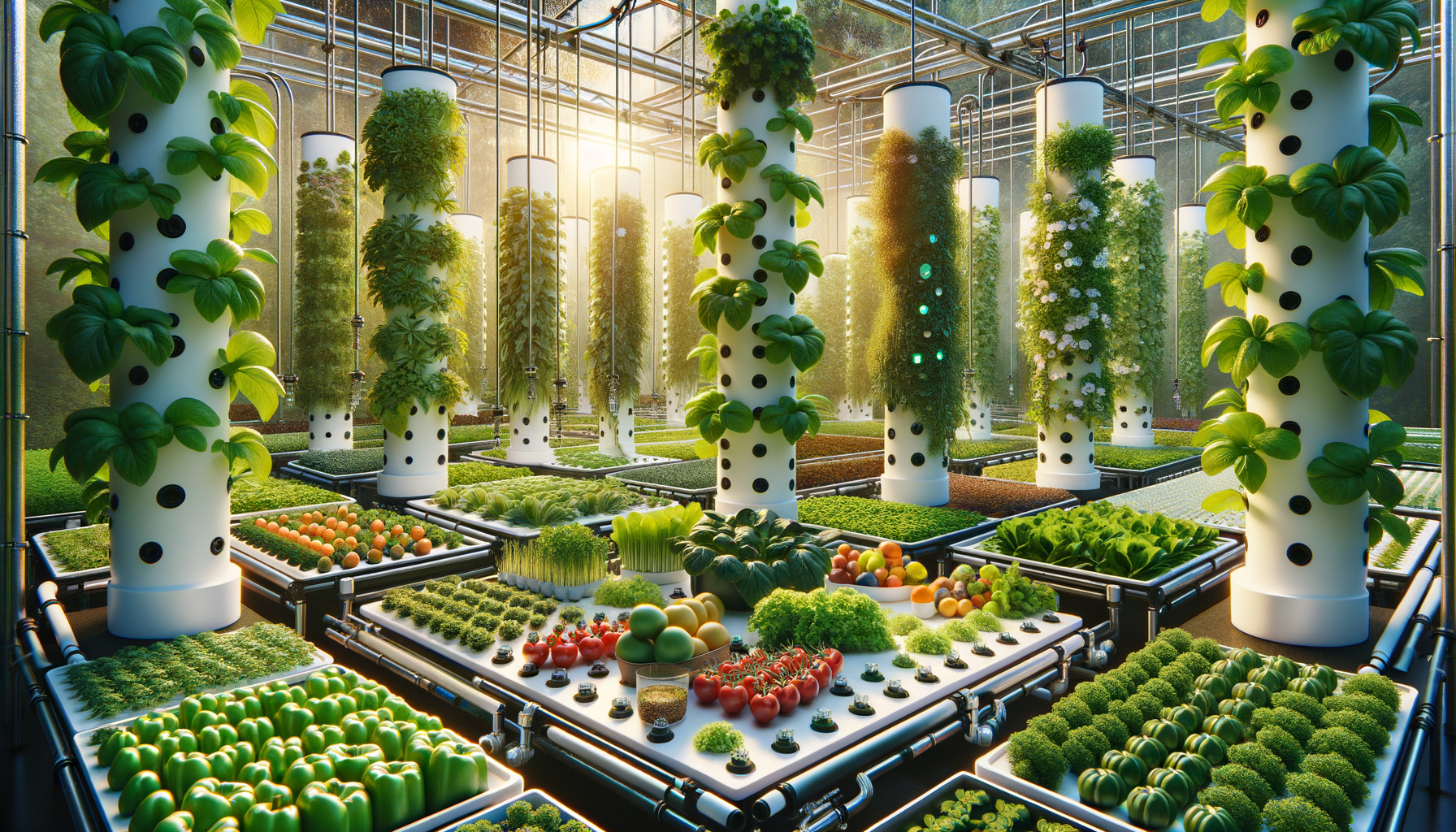Introduction to Hydroponic Farming
Hydroponic farming is revolutionizing the way we think about agriculture by providing a sustainable and efficient method of growing plants without soil. This innovative technique is gaining traction as it addresses some of the pressing challenges faced by traditional farming, such as land scarcity, water usage, and environmental impact. By understanding hydroponic farming techniques, we can appreciate how this method supports sustainable growing practices.
The Basics of Hydroponic Systems
At its core, hydroponic farming involves growing plants in a nutrient-rich water solution rather than soil. There are several types of hydroponic systems, each with its unique setup and benefits. Some popular systems include:
- Nutrient Film Technique (NFT): Plants are placed in a shallow channel where a thin film of nutrient solution flows over the roots.
- Deep Water Culture (DWC): Plant roots are suspended in a nutrient solution, providing continuous access to water and nutrients.
- Wick System: A passive system where a wick draws nutrient solution from a reservoir to the plant roots.
Each system is designed to maximize plant growth by ensuring optimal nutrient delivery, oxygenation, and light exposure. The choice of system often depends on the type of plants being grown and the available resources.
Environmental Benefits of Hydroponic Farming
Hydroponic farming offers several environmental benefits that make it an attractive option for sustainable agriculture. One of the most significant advantages is water conservation. Unlike traditional farming, hydroponic systems use up to 90% less water, as the nutrient solution is recirculated and reused. This is particularly beneficial in regions facing water scarcity.
Additionally, hydroponic farming reduces the need for pesticides and herbicides, as the controlled environment minimizes pest and disease outbreaks. This not only promotes healthier produce but also reduces chemical runoff into the environment. Furthermore, hydroponic systems can be set up in urban areas, reducing the carbon footprint associated with transporting produce from rural farms to city markets.
Economic Viability and Market Potential
The economic viability of hydroponic farming is increasingly being recognized as demand for fresh, locally grown produce rises. While the initial setup costs for hydroponic systems can be higher than traditional farming, the long-term savings on water, fertilizers, and pesticides can offset these expenses. Moreover, the ability to grow crops year-round in controlled environments can lead to consistent yields and income.
The market potential for hydroponically grown produce is expanding as consumers become more conscious of sustainable and healthy eating habits. Hydroponic farms can cater to niche markets, such as organic produce, and capitalize on the growing trend of urban farming. This adaptability and market responsiveness make hydroponic farming a promising venture for entrepreneurs and established farmers alike.
Challenges and Future Prospects
Despite its numerous advantages, hydroponic farming is not without challenges. The reliance on technology and energy to maintain optimal growing conditions can be a barrier, especially in regions with limited access to reliable electricity. Furthermore, the need for specialized knowledge and skills to manage hydroponic systems can be a hurdle for new entrants into the field.
However, the future prospects for hydroponic farming are bright. Advances in technology, such as renewable energy sources and automation, are making hydroponic systems more accessible and efficient. As research continues to improve nutrient solutions and plant varieties, hydroponic farming is poised to play a crucial role in sustainable agriculture, helping to feed a growing global population while minimizing environmental impact.



Leave a Reply